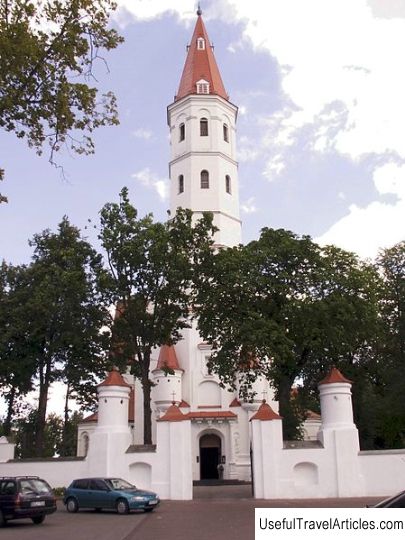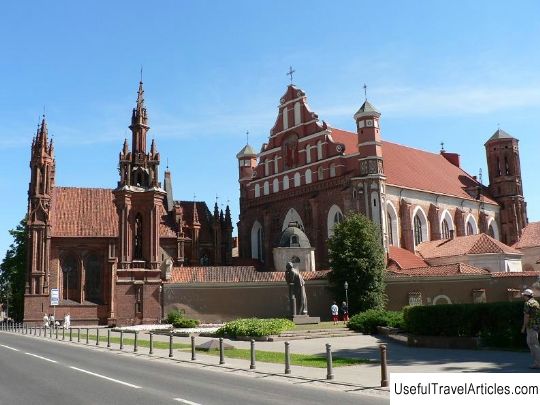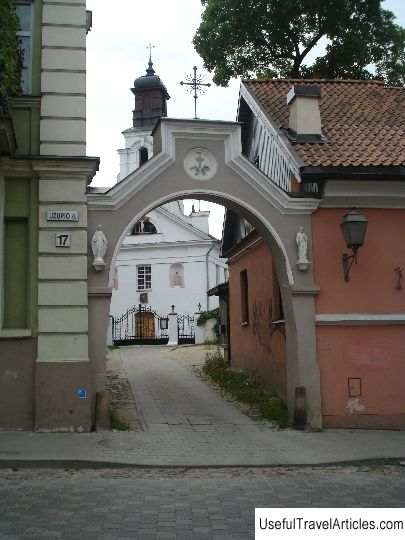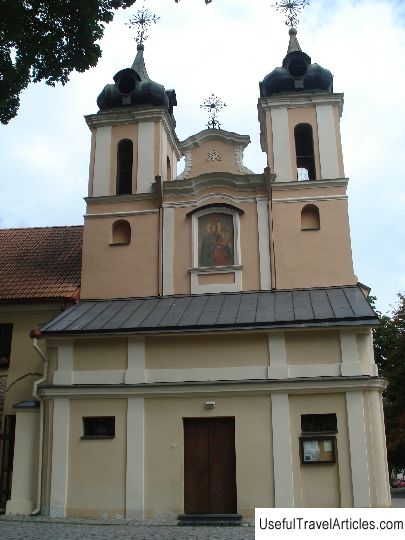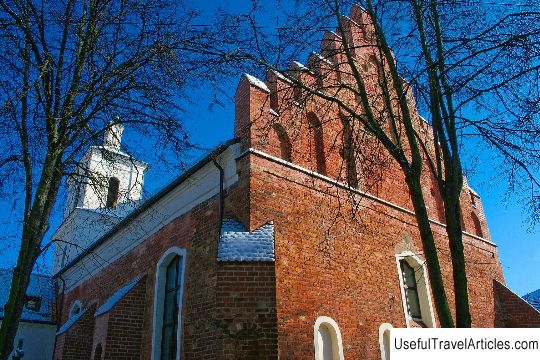Church of St. Michael (Svento Mykolo baznycia) description and photos - Lithuania: Vilnius
Rating: 7,9/10 (2711 votes) 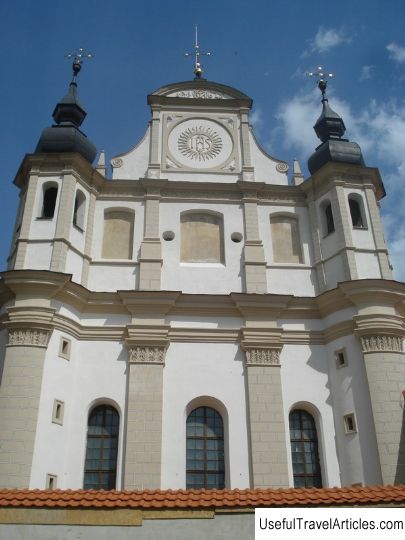
Church of St. Michael (Svento Mykolo baznycia) description and photos - Lithuania: Vilnius. Detailed information about the attraction. Description, photographs and a map showing the nearest significant objects. The title in English is Svento Mykolo baznycia. Photo and descriptionThe construction of the Church of St. Michael began in 1594, when the Chancellor of the Grand Duchy of Lithuania Lev Sapega presented the nuns of the Bernardine order with his palace, which had already been equipped for a small monastery, and then allocated funds for the construction of a church at the palace ... The construction was well financed and was completed by 1625. However, the temple was destined for a difficult fate. In 1655 he suffered greatly from the invasion of the Cossacks during the Russian-Polish war. The building was looted and then burned down. In 1663, it was restored again, with a baroque facade and side towers added to the renovated building. Since then, the building has been reconstructed several times, but has not undergone significant changes. According to some reports, at the end of the 17th century, and according to others, at the beginning of the 18th century, a separate bell tower, made in the Baroque style, appeared near the church. In 1703, a gallery decorated with columns was added to the church, the remains of which can be seen today. In 1886, the nuns from the church were transferred to the monastery at the Church of St. Catherine, and the building of the church itself was transferred to the women's gymnasium. However, in 1888 it was also closed. By 1905, representatives of the Sapieha family returned the church and began its restoration, which lasted from 1906 to 1912. Services were resumed in the church, and after 1919 representatives of the Bernardine order returned to the monastery. In Soviet times, the temple did not function, but was declared an architectural monument of all-Union significance and transferred to the Architectural Museum. Since 1972, the temple has served as a museum, and a department of historical research was located in the premises of the now defunct monastery. In 1993, the entire architectural complex was transferred to the Vilnius Archdiocese, and already in 2006 its restoration began. The architectural museum was liquidated, and after the completion of the reconstruction, the church heritage museum was opened in the temple. The opening ceremony took place in October 2009. The church has a rectangular plan, one nave. The length is 30 meters and the width is 13.5 meters. The architectural style is mixed, as it has features of both Gothic and Renaissance architecture. Gothic features are visible in the characteristic narrow windows and high tiled roof. The Renaissance prevails in the interior and decoration of the facade of the church. The main facade of the church is divided into three tiers. Between the windows of the first tier, you can see an ornament of rue twigs, the second tier is without windows, but the piers are filled with several niches that were previously painted with frescoes. Only the towers have windows on the second tier. The vault of the interior is cylindrical, which is typical of Renaissance architecture. The altars are made of marble and decorated with sculptural forms. The main altar is made of multicolored marble and dates from the 17th century, the three side altars date from the 18th century and are in the Rococo style. A monument to its founder, Lev Sapieha and his two wives has been preserved in the temple. In addition, the church houses a monument to the son of Sapieha and other representatives of this noble family. The ashes of Lev Sapieha rests in the church itself under the altar. The church itself is part of the Vilnius ensemble of buildings, built during the late Renaissance. Today the church is the largest architectural monument in Lithuania. Next to it is a Baroque bell tower dating from the early 18th century. HER tower is in perfect harmony with the towers of the main facade of the church. At the top of the bell tower is a weather vane depicting the holy Archangel Michael. The church is currently under reconstruction.         We also recommend reading Lubuski Teatr im. L. Kruczkowskiego description and photos - Poland: Zielona Gora Topic: Church of St. Michael (Svento Mykolo baznycia) description and photos - Lithuania: Vilnius. |
